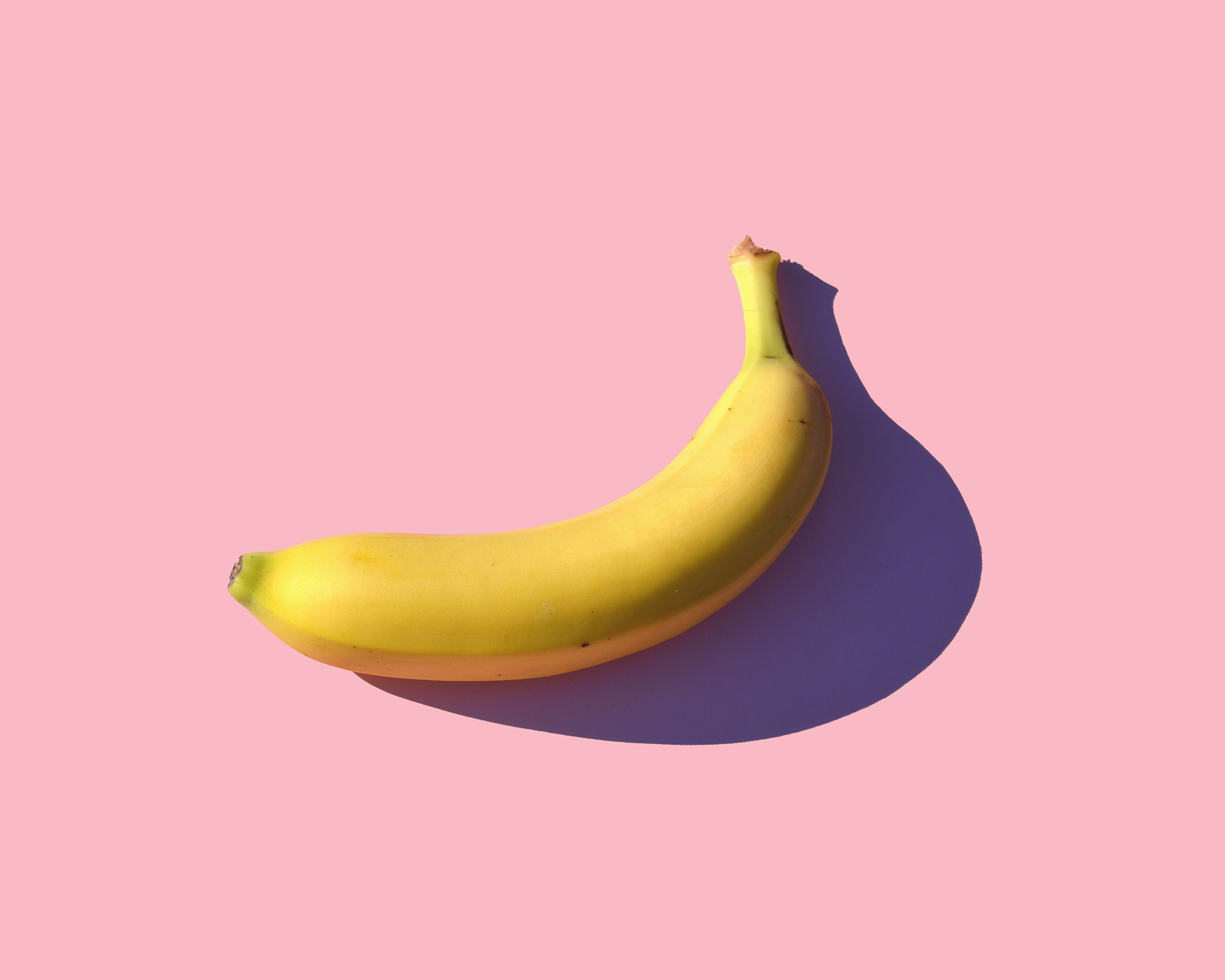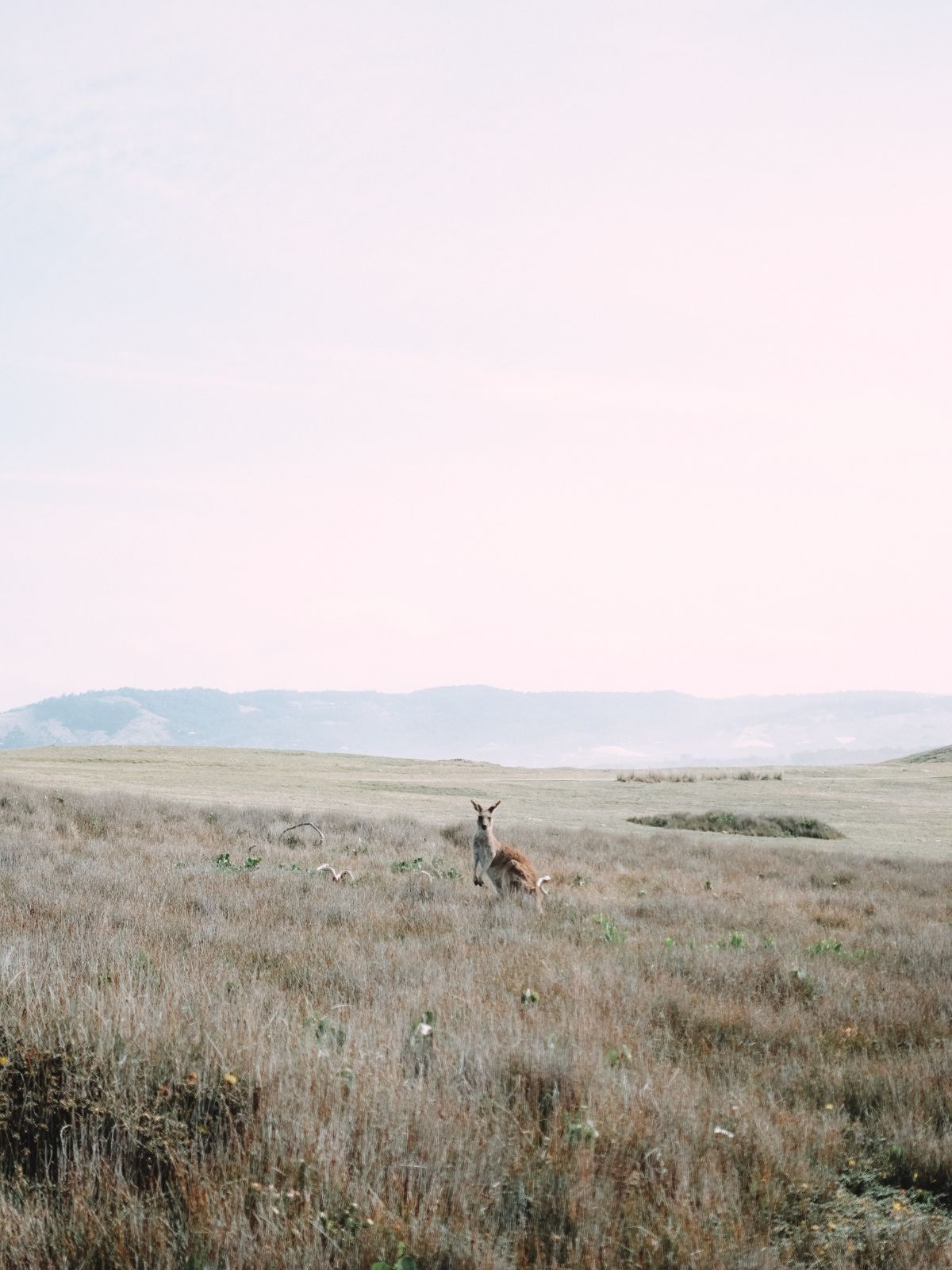Lady Gaga took to the red carpet in her infamous meat dress. Sung Yeonju and Ted Sabarese created a visual feast of haute couture garments out of eggplant, artichoke, spring onions, and waffles. Being draped in meat and vege may not appeal to all of us but these days designers are salvaging food waste to create sustainable fabrics for everyday clothing.
This is the Good On You guide to fashion and fabric that’s so good you could eat it.
1. Leather alternatives
The leather jacket may be iconic, but the impacts of the industry are concerning. It’s not always easy to see the connection between rainforest destruction and those on-trend leather pants. However, massive tracts of the Amazon and other precious rainforest are cleared each year to produce beef and leather products. This has led celebrities such as Sir Richard Branson, and Leonardo DiCaprio to call for a ‘Ban on Beef’.
The leather-tanning process is also a risky business. Heavy metals used in the tanning process are decimating waterways throughout countries like China, India, and Bangladesh.
But this doesn’t mean you have to avoid that staple jacket, handbag or pair of boots. Some ‘leathers’ are more considerate of our environment, climate, and our cows. The following foodie initiatives use natural ingredients to create ethical, vegan leather alternatives.
Piñatex
Innovative company Ananas Anam has replaced cows with pineapples! Dr. Carmen Hijosa developed Piñatex fabric using pineapple leaf fibres. Pineapple leaves are a by-product of the pineapple harvest and are often left to simply decompose. Now they’re being giving a brand new life and the process also creates an extra source of income for farming communities.
Kombucha
Kombucha tea has long been seen as an elixir used for its alleged digestive benefits. The jelly used to brew the drink – called a Symbiotic Colony Of Bacteria and Yeast or SCOBY – always seemed like a useless by-product. That is until scientists and designers alike started combining their talents to create a biodegradable vegan leather from the kombucha SCOBY. A new breed of fashion was grown!
Fruit leather
If probiotic jelly isn’t your thing, a Rotterdam-based collective of designers have crafted a leather made from leftover fruits. According to their research, around 3,500 kilograms of fruit and vegetables are thrown away on a single day at one of the outdoor markets in and around Rotterdam.
These graduates of the Willem de Kooning Academie in Holland decided to collect the unsold fruit from their local farmers’ markets. They then de-seed, puree, boil and dry the fruit out into thin leather sheets. From this, they create stylish pumpkin-strawberry handbags and peach lampshades!
2. Silk alternatives
Did you know that silk is actually saliva? Silkworms produce saliva to insulate themselves inside their cocoons. Farmers harvest the raw silk threads and reel them together for commercial use, killing the silkworms in the process. Sometimes harsh chemicals may be used in the cleaning or degumming of the cocoon.
While it is certainly possible to source silk material that’s sustainable and cruelty-free, it never hurts to have some alternatives up your sleeve!
Orange fiber
Another juicy start-up can be found in Italy. Sicilian-born Adriana Santanocito has created a soft, sustainable textile out of citrus waste. Orange Fiber aims to put the 700,000 tonnes of waste created by the orange juice industry to good use! Winner of an Ideas for Change Award from the United Nations Economic Commission for Europe, Orange Fiber plans to launch their products by the end of 2016.
Qmilk
Every year in Germany 1.9 million tonnes of raw milk, unsuitable for human consumption, goes to waste. German company Qmilch has come up with a way to create something positive from a wasteful industry. Qmilch’s founder Anke Domaske developed a biodegradable, chemical-free fibre using milk waste.
According to their website, they “pay attention to the sustainable animal husbandry of their suppliers”. We at Good On You would encourage Qmilch to make more detailed information on this publicly available. Creating the fabric is remarkably efficient – 1 kilogram of fibre takes just 5 minutes to make and uses a maximum of 2 litres of water.
Banana stalks
Banana fibres have been a part of clothing production since 13th Century Japan when they were used to make kimonos and samurai robes. In the tropical regions of the Asia-Pacific, bananas continue to be a source of natural fabric.
Farmers strip the stalks of the banana plant and then boil and spin the fibre until they resemble something like bamboo fibre. It’s heartening to see another untapped resource starting to be put to good use!
3. Nylon alternatives
Nylon is found in a wide variety of products, from underwear and hosiery to toothbrushes, umbrellas, knits, swimwear and activewear. It’s that percentage on the label meaning your stockings will stay stretchy and your yoga pants will be skin tight.
Unfortunately, nylon is a type of plastic derived from crude oil that’s put through an intensive chemical process. No form of nylon is biodegradable and manufacturing nylon is a very energy-hungry process. So let’s look at two potential food-based substitutes!
Coffee grounds
Coffee is not just a beverage – for many of us, it’s a way of life. But the innovative team at Singtex have taken this one step further and learned how to spin coffee into cloth. By combining coffee grounds with recycled plastic bottles, Singtex has created an eco-friendly fabric. S.Café technology keeps the material waterproof and odour-free – perfect for outdoor enthusiasts.
Coconut husks
Coconut is a gift from the heavens. We drink it, milk it, dry it, squeeze it and, of course, ice-cream-it. Now this most versatile of fruits can be used to protect us from the elements. Textile technology company 37.5 (named after the average person’s ideal body temperature) developed the Cocona fabric. Derived from the fibrous outer layer of a mature coconut, Cocona is flexible, comfortable and temperature smart. This means you’ll stay cooler when it’s warm and warmer when it’s cool – perfect for activewear.
These are just a few examples of how food waste can be repurposed into sustainable, cruelty-free fabrics. You can use the Good On You app to find even more tasty brands.



















